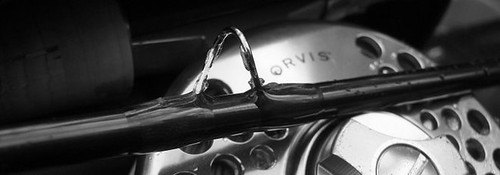
What Are The Best Fly Rods Out There?
What are some of the best Rods? What Rods are right for me? What Can I afford or what is the best casting rod out there?
Your First Fly Rod - What to Buy?
This may sound like sacrilege, but I’m a bit envious of golfers. For one thing they have a “19th hole” as the place to finish their round. But what makes me even more envious is that they have a bag full of clubs. No matter what situation they encounter, they have the right club to use. Just think how nice it would be to come to a deep run on the river and be able to say to you, “This is a place for 9 foot fast action 5 weight rigged with a mohair leech.” Even better would be to be able to turn to your caddy and say, “Bring me the 7 foot 6 inch slow action 3 weight. I see a few tricos about 30 feet upstream.”
If you stick with fly fishing very long, you will accumulate a selection of roods for different fishing conditions. But what should you get as your first rod? To help you make that decision and to help reduce you anxiety when you go into the fly shop a little understand will help.
There is some jargon that goes with fly rods. One of these words is “weight (wt).” With a fly rod, weight does not refer to how much the rod itself weighs but to the weight of the line the rod was designed to cast. The ‘weight number” system was developed by the tackle manufactures to provide an industry wide standard. Weights range from “0” to “15” and are based on the weight in grains (approximately 475 grains to the ounce) of the first 30 feet of the line. A 4 wt line has a standard weight of 120 grains and a 7 wt line has a standard weight if 185 grains. Line weight is important because in has an important bearing on how big a fly you can cast and how well you can cast in windy conditions. The higher the line weight the bigger the flies you can cast and the easier you can cast into the wind. Rods designed for heavier lines tend to be more beefy and able to land bigger fish without breaking.
Another term you will hear cast about is the action of the rod There are three basic actions – also sometimes referred to as flex – slow or full flex, medium or mid flex, and fast or tip flex. Slow or full flex rods bend throughout nearly the entire length of the rod. This makes the rod a great shock absorber when fighting a fish but it also means that a lot of the casting energy is absorbed by the rod and not transferred to the line. Slow action rods don’t cast as far as other rods but are more forgiving to laps in your timing while perfecting your casting. At the other extreme is the fast rod. With these rods most of bending occurs in the upper 1/4th or less of the rod. Since much less of the casting energy is lost in the flexing of the rod, they will cast a line further. It is much easier to mend – move or reposition - your line on the with a fast action rod than it is with a slow action rod.
Now that you have some confidence in understanding what the sales staff will be talking about, it is time to think about what rod to get. The most important piece of advice I can give you is “invest in the rod and not the reel”. Buy the best rod you can afford. As with everything, there is a definite “value for price” relationship with fly rods. You can learn on a 50 dollar starter outfit but you will be frustrated and discourage. You are going to get frustrated anyway so why add an extra layer. Good quality rods are available in the $120 to $150 dollar range. Nearly all the major manufactures have a rod in that price range. You can spend upwards to $600 for a rod but it is unlikely that even most seasoned fly fishers will be able to tell that the rod is 3 times better.
Now, almost all of the mid-priced rods are made of graphite so material isn’t an issue in your decision. Advances in graphite technology, along with rod building experience, have progressed to the point that the number of rod sections is not a major concern. It is unlikely that you will notice much difference between how a seven piece rod casts and how a two piece rod casts.
Fly rod lengths typically range from 7 feet to 9 feet. Since the rod is a lever by which you are providing energy to the fly line, a longer rod will cast further than a short rod. Shorter rods have an advantage in the tight conditions of smaller streams.
So, what should you buy? Well that depends on what kind of fishing you will be doing. The following decision table may help
Top Fly Rod Reviews Here
MORE AT FLYFISH ADDICTION


No comments:
Post a Comment